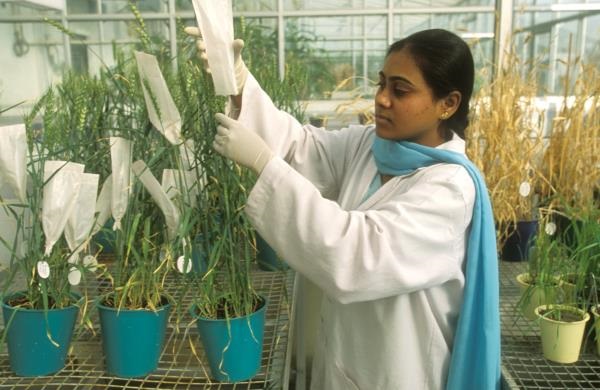
24 November 2015, Rome - In the run-up to the United Nations Climate Change Conference in Paris, FAO has released new guidelines to assist countries in better conserving and sustainably using genetic resources in times of climate change.
The Voluntary Guidelines to Support the Integration of Genetic Diversity into National Climate Change Adaptation Planning aim at ensuring that genetic resources for food and agriculture are part of national plans addressing measures for adaptation to climate change.
Genetic resources for food and agriculture encompass the diversity of plants, animals, forests, aquatic resources, micro-organisms and invertebrates that play a role in food and agricultural production.
While these life forms are themselves threatened by climate change, their genetic makeup makes them key players in addressing the challenges such changes present.
If properly conserved and used, for example, plant genetic resources may provide seeds that can tolerate or thrive amid greater aridity, frost, flooding or soil salinity. Livestock breeds raised in harsh production environments over a long period of time tend to acquire characteristics that enable them to cope with these conditions.
Policies that anticipate future needs and plan the management of genetic resources as a pivotal reservoir and tool can help build more resilient agricultural and food production systems.
To promote more informed decision-making, FAO is, for example, developing an instrument that can be used to predict the impact of climate change on the distribution of livestock breeds.
"Genetic resources for food and agriculture will have to contribute greatly to our efforts to cope with climate change," says Maria Helena Semedo, FAO Deputy Director-General for Natural Resources. "We need to act now to reduce the risk that the scale and speed of climate change will surpass our ability to identify, select, reproduce and - eventually - use these resources in the field." she added.
If current trends prevail, yields of some staple crops may in 2050 be 25 percent lower than today, according to the Intergovernmental Panel on Climate Change (IPCC). Such projections make plans to organize and deploy genetic resources all the more urgent, especially as just five cereal crops - rice, wheat, maize, millet and sorghum- provide about 60 percent of all human dietary energy.
Guidelines fill a gap
Currently, there is no commonly adopted approach to integrating agricultural biodiversity into strategic planning for climate change adaptation. The Guidelines aim to address this gap. They will assist countries in addressing genetic resources dimensions when developing or updating their National Adaptation Plans (NAPs).
"We need to secure and mobilize genetic resources now to have options for the future - we need to have effective conservation, improved information and improved utilization pathways - and we need to plan. Funding is required to support countries in this process," says Irene Hoffmann, Secretary of FAO's intergovernmental Commission on Genetic Resources for Food and Agriculture, under whose aegis the guidelines were developed.
FAO together with the United Nations Development Programme currently assists eight developing countries in the development of their NAPs.
Greater efforts need to be made to conserve and support the sustainable use of plant varieties and livestock breeds and to collect and conserve the wild relatives of important food crops. Promoting the maintenance of on-site farm diversity allows for evolution in step with environmental changes. Regional and global gene banks provide for the maintenance of backup collections of genetic material that can be drawn upon to support climate change adaptation measures.
Given that all countries depend on genetic diversity from other countries and regions, international cooperation and exchange of such material is crucial. In this regard, the Commission negotiated the International Treaty on Plant Genetic Resources for Food and Agriculture, which allows researchers and breeders to access genetic resources from other countries.